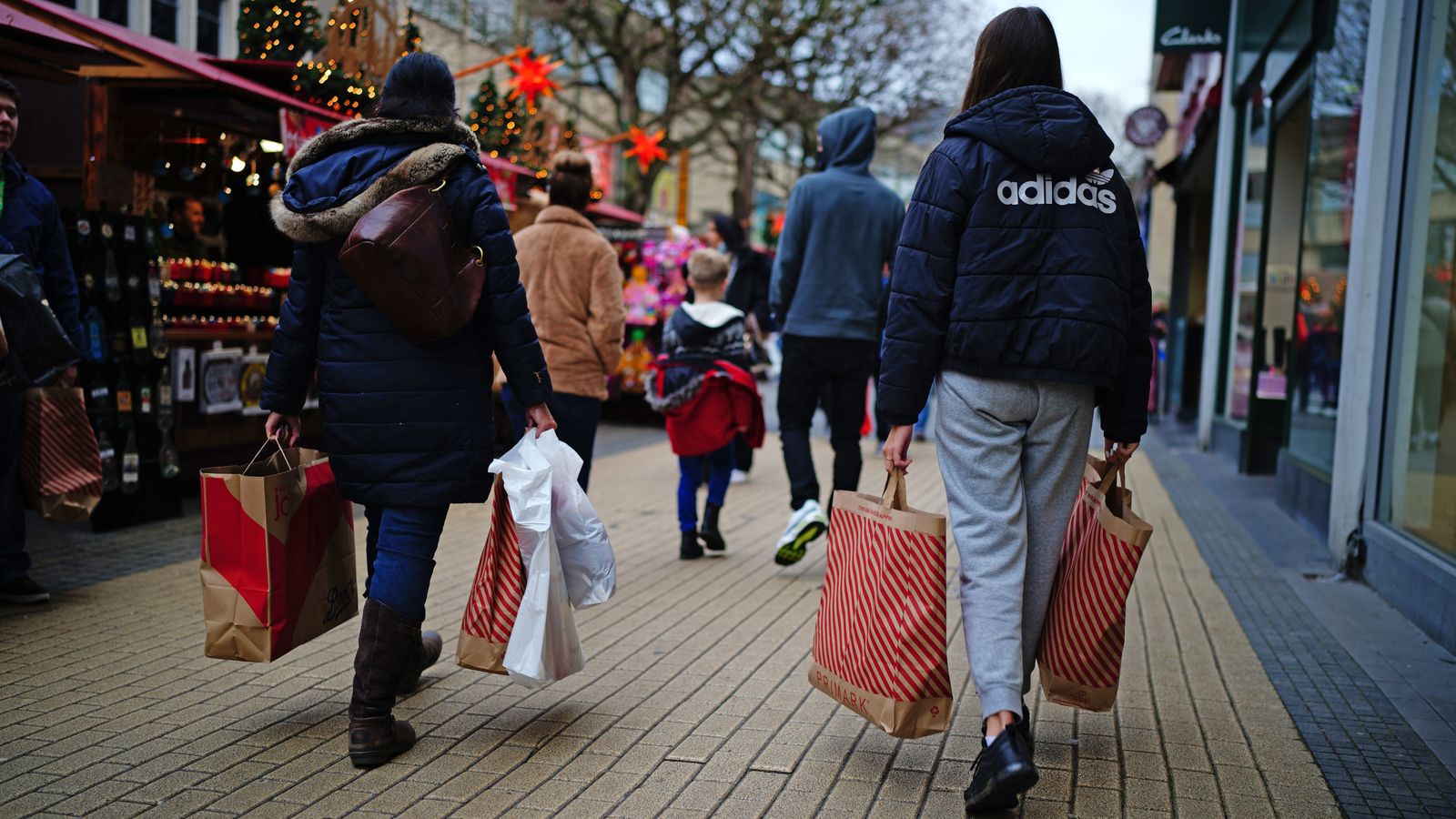Cost of living: Shoppers curbed Christmas spending in blow to struggling retailers

Cost-conscious shoppers curbed spending over the Christmas period adding to the woes of retailers, official figures show.
Retail sales unexpectedly fell by 1% in December, the second month of decline, according to the Office for National Statistics.
It was far worse than the 0.5% rise predicted by economists.
Compared with December 2021, sales were down 5.8% – the biggest fall since 1997.
The data is further evidence of the pressure the cost-of-living crisis is putting on households, as continuing high inflation fuels prices.
Spending in non-food shops dropped by 2.1% during the month.
Food sales fared better, with just a 0.3% fall in December.
Grocery sales had risen 1% in November, leading some to speculate buyers were stocking up early for Christmas.
Online retailers also took a hit as a result of the postal strikes, leading to concerns about delayed deliveries.
Advertisement
The proportion of online sales fell to 25.4% in December, from 25.9% the month before.
It is the latest sign of the pressure the cost-of-living crisis is putting on households up and down the country.
Sales volumes were 1.7% below their February 2020 levels, before the COVID-19 pandemic struck.
ONS deputy director for surveys and economic indicators, Heather Bovill, said: “Retail sales dropped again in December, with feedback suggesting consumers cut back on their Christmas shopping due to affordability concerns.
“After last month’s boost as shoppers stocked up early, food sales fell back again in December with supermarkets reporting this was due to increased food prices and the rising cost of living.
“Online sales dipped with feedback indicating postal strikes were leading people towards purchasing more goods instore.”
Read more:
Inflation eases slightly due to cheaper fuel and clothes
Analysis: The worst is not yet over for consumers despite peaked inflation
Grocery staples up to 30% more expensive than a year ago
The figures came as a survey indicated consumer confidence had dipped again to a near-historic low in the face of wage pressures.
Although the rate of inflation dipped for the second month in a row in December, to 10.5%, signalling the peak of the cost-of-living crisis has passed, this offered little relief for households and businesses still wrestling with high prices.
Helen Dickinson, chief executive of the British Retail Consortium, said: “Many of the cost pressures bearing down on retailers and their customers remain in 2023, with high energy costs, the war in Ukraine, and domestic labour shortages all taking their toll.
“However, BRC modelling suggests the situation will improve in the second half of the year.”
Gabriella Dickens, senior UK economist at Pantheon Macroeconomics, said: “Heavy snowfall and intensifying strike action in December likely contributed to the further drop in retail sales, but the underlying picture is weak too.
“The month-to-month fall pushed retail sales volumes 2.5% below their average level in 2019, the largest shortfall since February 2021, when the UK economy still was in lockdown.”
Meanwhile, governor of the Bank of England has said inflation is likely to fall “quite rapidly” starting in the late spring as he said the latest drop was “the beginning of a sign that a corner has been turned”.
Andrew Bailey told Business Live during a visit to South Wales that lower energy prices will help push down inflation in coming months.